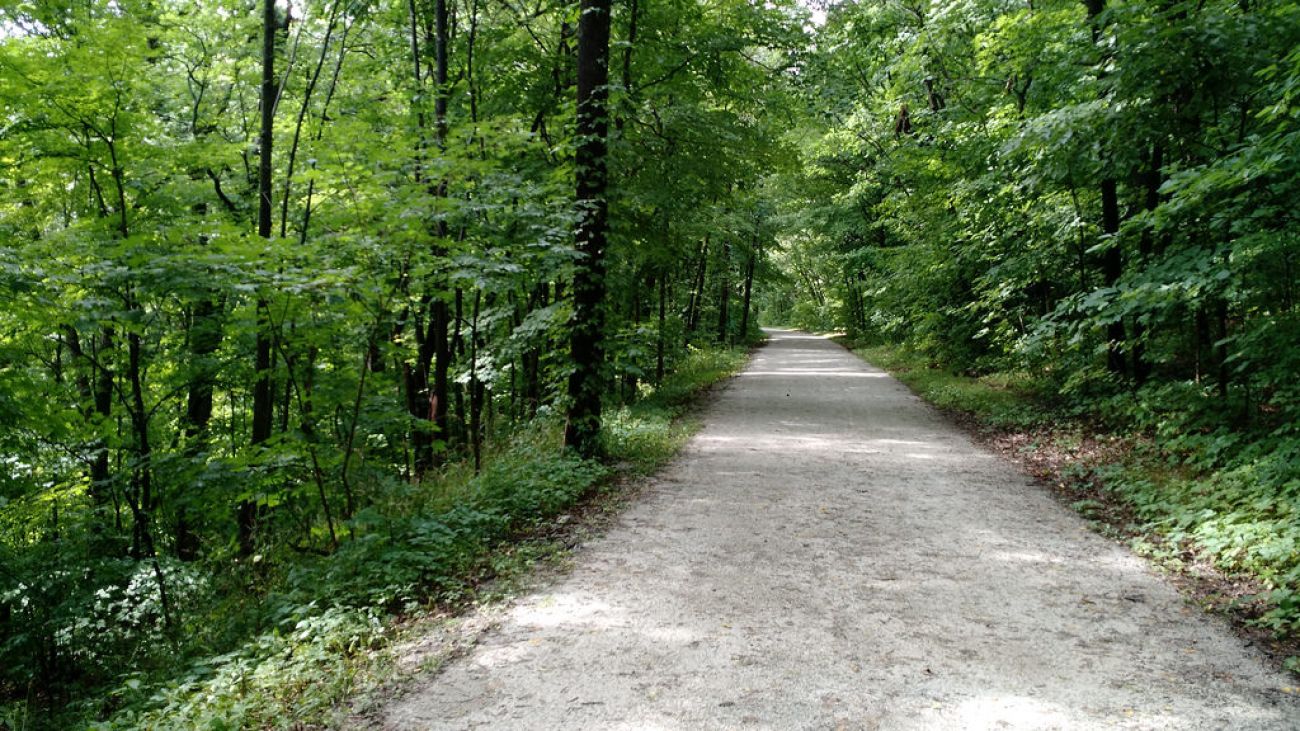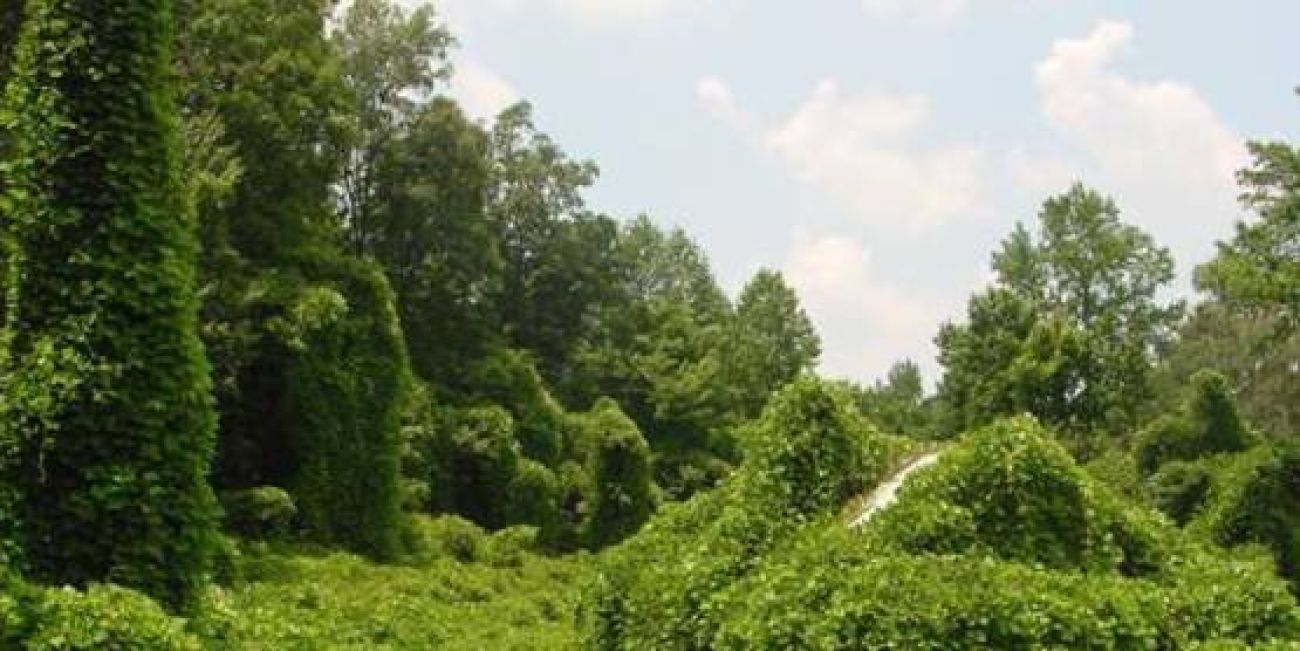Watch out! Creepy kudzu coming to Michigan?

Picture decrepit plantations enveloped in aggressively spreading kudzu. Picture the remnants of abandoned outbuildings invisible under kudzu’s woody vines. Picture forests smothered and trees killed by blankets of kudzu.
That’s only in the South, right?
Nope.
The invader has reached as far north as Benzie County on the Lake Michigan shore and several other spots in the state, including ones in Allegan, Berrien, Cass and Clare counties.
Related:
- Great Lakes water temperatures warming up ahead of Fourth of July weekend
- Moose herds threatened by ticks, brain worms, the result of climate change
- Can climate migrants offset Michigan’s population woes? Maybe, experts say
“There’s plenty of habitat in the southern part of Michigan that could be colonized by kudzu,” said Jordan Marshall, a co-author of a new study which points out that kudzu “may be able to withstand cooler temperatures than initially thought.”
The study warns that the Midwest is at the greatest risk of invasion, with the southern half of the Great Lakes Basin suitable for kudzu. It’s also been spotted in northern Indiana and northern Ohio.
Blame the warming climate.
“Kudzu is a weird one,” said Marshall, a professor of biological sciences at Purdue University Fort Wayne, in Indiana.
Nicknamed “the invasive vine that ate the South” and “the weed that ate the South,” it was deliberately brought from eastern Asia to North America for the Japanese gardens at the 1876 World’s Fair – the Centennial Exhibition in Philadelphia – and later promoted in the U.S. for ornamental plantings, animal fodder, soil conservation, erosion control and ground cover.
Spread it did during the next century and a half, with sightings in 32 states and an economic impact estimated at more than $336 million a year, mostly due to reduced forest productivity and the cost of personnel and chemicals to treat it.
Marshall said kudzu was probably brought to the Michigan sites because there are “big gaps between sites that go up the coast of Lake Michigan. There’s no connectivity.”
And the Michigan patches could have been introduced a long time ago but not identified, noticed or reported until relatively recently, he said.
“Dense, prickly thickets overtake native vegetation. Seeds may survive in the soil for up to six years,” according to Michigan Gardener.

It belongs to the bean family, and its flowers look like snap bean flowers.
And it grows fast, fast, fast – as much as 12 inches a day and up to 25 feet in six to eight weeks.
According to the Department of Natural Resources (DNR), up to 30 woody vines can grow from a single plant and extend 32 to 100 feet, with roots that can grow to 6 feet long and weigh up to 400 pounds.
It’s on the DNR Invasive Species Watch List of plants and animals that pose an immediate or potential threat to Michigan’s economy, environment or human health.
“When it grows over a tree, it basically suffocates the tree and starves it from light. It gets reduced growth and eventually the tree dies,” Marshall said.
Add to that the fact that it’s hard to eradicate and has no natural pests.
Marshall said, “It takes a lot of effort surveying and trying to treat it as soon as it’s discovered.”
There has been biocontrol research to produce insects to control kudzu, Marshall said, but the invader is closely related to soybeans. That means a “real economic detriment” if the insects cross over to soybeans.
Katie Grzesiak, DNR’s terrestrial invasive species coordinator, said the department collaborates with local invasive species management areas across the state and funds some prevention and treatment proposals.
“With a changing climate, it’s a species we should be tackling before it gets out of hand,” Grzesiak said
A $31,400 grant went to the Southwest by Southwest Corner Cooperative Invasive Species Management Area that covers Van Buren, Berrien and Cass counties in Southwestern Michigan. That money is also used to combat another invader, Japanese stiltgrass.
Abbie Bristol, the management area’s strike team coordinator, said control efforts involve mechanical removal of pieces bigger than thumb size and chemical treatment with herbicides. One goal is to reduce any vertical movement, such as climbing up poles to cover power lines.
One site is in a park in South Haven where kudzu was planted on a sand dune, presumably to keep the dune from moving.
“One of my priorities is make sure we’re treating it responsibly,” Bristol said, and not having a negative impact on Lake Michigan or people’s enjoyment of the beach.
Every Michigan county is in a management area, and Bristol said the public can ask them to do a free survey of their property to identify possible infestations.
Kudzu can’t be used for livestock fodder or biofuels because it jams up balers, but it’s not totally useless, depending on your appetite.
There are recipes online for using kudzu as an ingredient in quiches, casseroles, soups, herbal tea, salads and ginger lemonade, among other dishes.
However, as an Atlanta Journal-Constitution article noted, “it hasn’t made its leap into mainstream cuisine – yet.”
The DNR asks the public to report any occurrences online to the Midwest Invasive Species Information Network.
The study by Marshall and his former graduate student, Ashley Kovach-Hammons, appeared in the journal Plants.
Eric Freedman reports for Capital News Service.
This story was originally published in the Great Lakes Echo.
Michigan Environment Watch
Michigan Environment Watch examines how public policy, industry, and other factors interact with the state’s trove of natural resources.
- See full coverage
- Subscribe
- Share tips and questions with Bridge environment reporter Kelly House
Michigan Environment Watch is made possible by generous financial support from:
Our generous Environment Watch underwriters encourage Bridge Michigan readers to also support civic journalism by becoming Bridge members. Please consider joining today.
See what new members are saying about why they donated to Bridge Michigan:
- “In order for this information to be accurate and unbiased it must be underwritten by its readers, not by special interests.” - Larry S.
- “Not many other media sources report on the topics Bridge does.” - Susan B.
- “Your journalism is outstanding and rare these days.” - Mark S.
If you want to ensure the future of nonpartisan, nonprofit Michigan journalism, please become a member today. You, too, will be asked why you donated and maybe we'll feature your quote next time!






